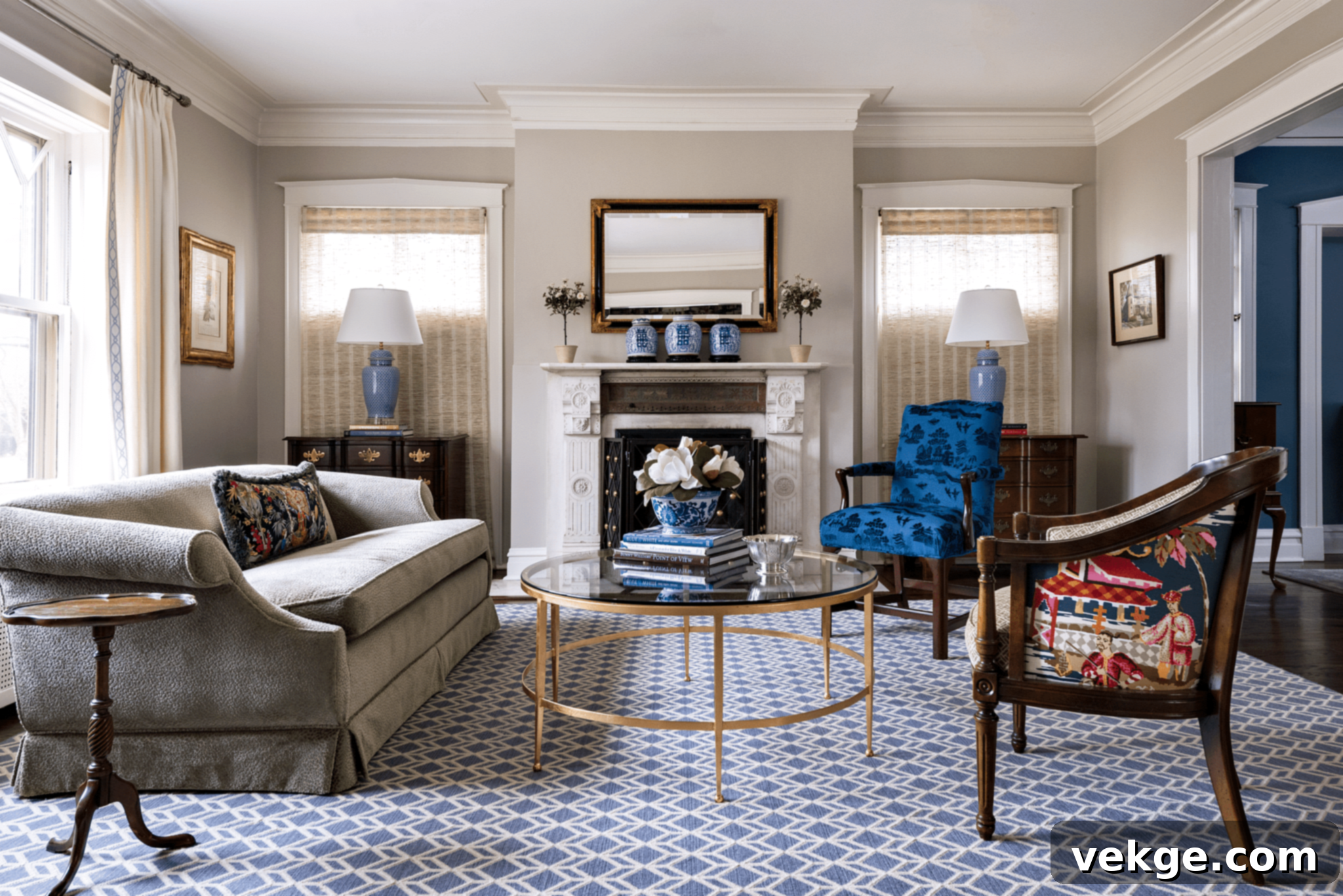Mastering the Blend: Seamlessly Integrating Your French Country Sofa with Modern Home Decor
For over three centuries, French country decor has captivated hearts and graced homes with its unique blend of warmth, elegance, and unpretentious charm. Far from being ostentatious, this enduring style effortlessly marries rustic appeal with unparalleled comfort, creating spaces that truly feel like home. It’s a design philosophy where refined elements are softened by natural textures and finishes, fostering an atmosphere of ultimate relaxation and inviting serenity. In today’s dynamic design landscape, the French country style often manifests as a more relaxed, yet still sophisticated, interpretation of the classic Provence aesthetic, honoring both its rustic roots and its inherent elegance.
If you’ve recently fallen in love with a beautiful French country sofa and brought it into your living room, you might be wondering how to ensure it harmonizes beautifully with your existing modern amenities and contemporary aesthetics. The key lies in understanding the foundational principles of French country design and then cleverly introducing complementary elements. This comprehensive guide will walk you through the essential steps and inspire you on how to expertly blend your exquisite French country sofa with the rest of your modern living space, creating a cohesive and visually stunning environment.
Unpacking the Enduring Appeal: Key Elements of French Country Decor
The genesis of French country style can be traced back to the 1700s, heavily influenced by King Louis XV, who frequently retreated with his court to the tranquil French countryside. This style later found its way to North America after World War I, carried by American soldiers who admired its delicate beauty. Characterized by a soft, graceful approach, French country decor is much more than just a collection of items; it’s an atmosphere. Here are the defining elements that contribute to its timeless allure:
- Vintage Furniture with Character: At the heart of French country style lies its distinctive furniture. Pieces like the iconic French country sofa, often featuring ornate details, elegant cabriole legs, and beautifully distressed or chalk-painted finishes, are signatures of this aesthetic. Beyond sofas, you’ll find dining chairs, armoires, accent couches, and cabinets that embody this sophisticated rusticity. The beauty often lies in their imperfections and the sense of history they convey.
- Soft and Muted Color Palettes: French country interiors embrace a soothing spectrum of muted yet warm colors. Think gentle beiges, creamy yellows, soft creams, calming greens (like sage or mint), and serene light blues. These colors are chosen to reflect the natural light and surroundings of the French countryside, creating a tranquil and inviting ambiance. They form a backdrop that is both subtle and deeply comforting.
- Embrace of Natural Elements: Authenticity is key, and natural elements are paramount. Materials such as exposed natural wood (often with a weathered look), rough-hewn stone, and wrought iron are highly favored. These elements provide a grounding, organic feel that contrasts beautifully with the more refined aspects of the decor.
- Luxurious and Relaxed Fabrics: The choice of fabrics is crucial for achieving the characteristic softness and comfort. Natural fibers like breathable cotton, earthy jute, and elegant linens are popular for upholstery, drapes, and soft furnishings. Patterns are typically classic and understated, including Toile de Jouy (often referred to simply as Toile), delicate florals, traditional gingham, subtle stripes, and timeless plaid. These patterns add visual interest without overwhelming the serene palette.
- Elegant Accents and Lighting: To complete the look, French country style incorporates elegant accents that provide a touch of refinement. Ornate chandeliers, charming wall sconces, and classic candle stands are frequently used to cast a soft, ambient glow. Other decorative items might include ceramic vases, antique mirrors, and wrought iron elements.
Ultimately, French country style is about exuding softness, delicacy, gracefulness, and intricate detail in a way that feels organic and inviting. The finish on the furniture is particularly important; a distressed painted finish is essential for achieving that casually rustic, time-worn appearance that defines the style. Furthermore, it’s crucial to remember that this style deliberately avoids bold, clashing patterns, neon colors, or stark graphic designs. The emphasis is always on understated elegance and a harmonious visual flow.
How to Expertly Blend French Country Sofas with Modern Decor Aesthetics
So, you’ve made the delightful decision to introduce a classic French-style sofa into your living room. Now, the exciting part begins: achieving a perfect balance that marries its rustic elegance with the sleekness and functionality of modern design. Here’s how to create a cohesive and stylish space:
1. Thoughtfully Introduce Complementary Vintage Home Decor
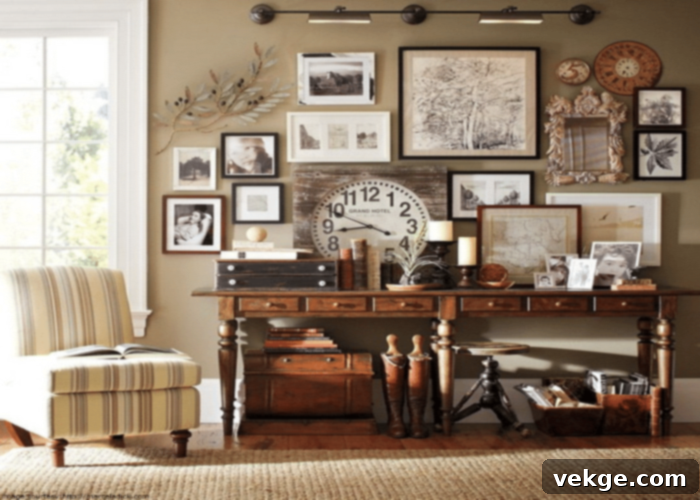
A French country sofa possesses an inherent chicness that prevents it from ever looking outdated. Its timeless grace and beauty often stun anyone who encounters it. To further enhance this classic piece and create a truly integrated look, consider bringing in other vintage-inspired elements that echo its charm without competing with it. This could include beautifully carved wooden ottomans, delicate ceramic vases (perhaps with a crackled glaze), elegant chandeliers, sparkling crystal wall sconces, or even modern pendant lights with a classic twist. Look for pieces with distressed painted finishes or natural wood accents that have a time-worn, artisanal quality. Think about ornate mirrors, antique books, or faded textiles that add layers of history and texture. The key is to select items that feel authentic and contribute to a sense of lived-in comfort, bridging the gap between historical elegance and contemporary living. These carefully chosen vintage pieces will resonate with your sofa’s character, making your living room feel thoughtfully curated and rich with personality.
2. Embrace a Harmonious Neutral Color Palette
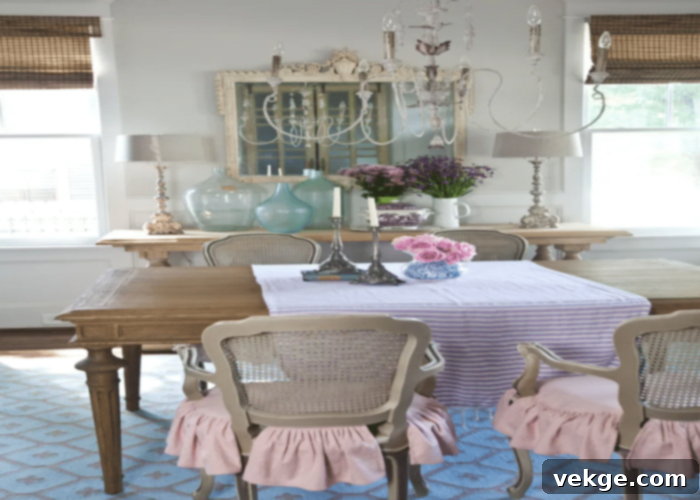
The ideal color palette to complement a French country sofa is inherently warm, neutral, and light, creating an inviting and airy atmosphere. A wide range of sophisticated neutrals can serve as your foundation, including crisp whites, soft creams, various shades of beige, elegant grays, and even versatile taupes. These colors provide a serene backdrop that allows the intricate details of your sofa to shine without being overwhelmed. For a classic French country touch, consider pairing crisp whites with warmer neutral shades. Occasionally, you can introduce subtle accents of muted red or soft blue to evoke the colors often found in Toile de Jouy patterns. To further enhance the warmth and add a touch of unexpected charm, you might combine a base of light neutrals with metallic accents like copper, or delicate pops of warm pink or terracotta red in smaller decorative items. The goal is to layer various tones and textures within your chosen neutral scheme, creating depth and visual interest while maintaining a sense of calm sophistication that allows both your sofa and modern elements to coexist beautifully.
3. Leverage the Beauty of Natural Materials
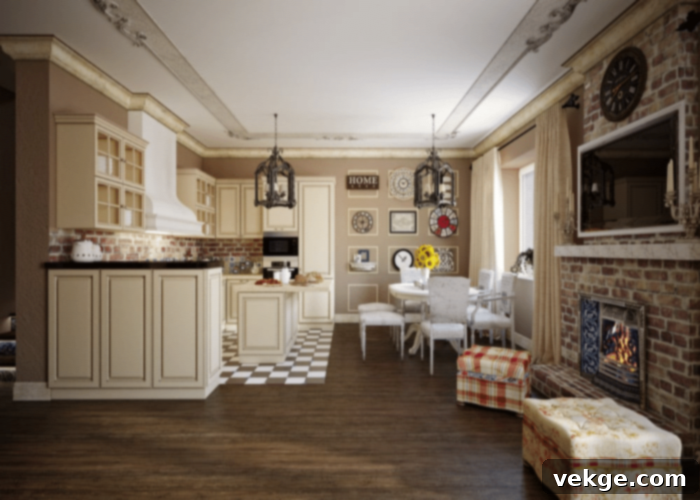
Your French country sofa will inherently find its perfect companion in the organic textures and grounding presence of natural materials. Incorporating elements like natural wood floors (such as oak, pine, or even reclaimed timber), exposed brick walls, or natural stone accents (like limestone or terra cotta tiles) will instantly anchor the room and complement the sofa’s aesthetic. Wooden ceiling beams, whether original or decorative, add a rustic architectural feature that speaks directly to the country influence. Beyond structural elements, extend this natural theme through your furnishings and decor. Think about wooden coffee tables with a natural or distressed finish, wrought iron side tables, or rattan and wicker baskets for storage. Of course, using these natural features throughout your home will beautifully complement the muted color palette of your furniture and rooms. This thoughtful integration helps achieve that coveted “shabby chic” country farmhouse appearance – a look that is both incredibly inviting, comfortably fresh, and perfectly balanced, ensuring your elegant sofa feels right at home amidst both rustic and modern touches.
4. Incorporate Relaxed and Textured Fabrics
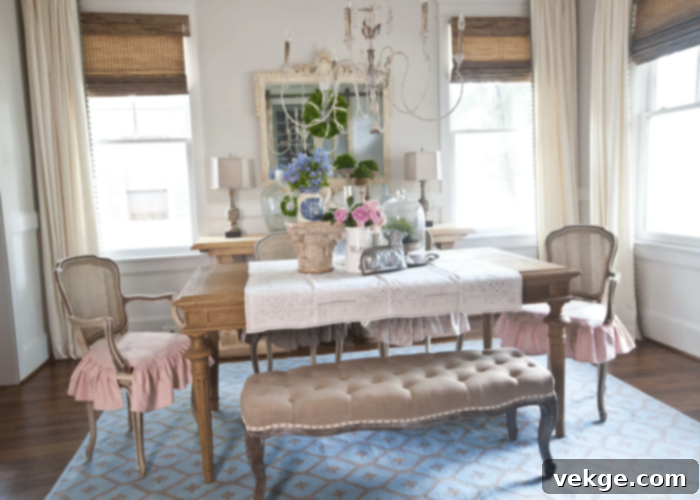
Beyond the muted color palette, the texture and choice of fabrics play a pivotal role in harmonizing your French country sofa with a modern setting. Focus on natural, relaxed fabrics that exude comfort and understated luxury. A popular approach is to pair neutral cottons with elegant linens, which can be combined with subtle floral patterns or classic buffalo checks. These combinations add visual depth without being overly busy. You can also introduce charming ruffled details on cushions, throw pillows, or curtain edges to enhance the soft, romantic feel. When introducing color, stick to low-intensity, warm hues such as warm blush pinks, soft baby blues, or gentle lavenders, all derived from nature. When selecting patterns, prioritize those that are subtle and delicate yet still engaging. Timeless choices include Toile de Jouy, discrete geometric shapes, classic ticking stripes, and various scales of floral motifs. The aim is to create a tactile experience that is soft to the touch and visually appealing, ensuring that the fabrics complement the sofa’s elegance and contribute to the overall serene and welcoming atmosphere of your living room.
Final Words on Harmonious French Country & Modern Design
As we conclude this guide, remember that integrating your beautiful French country sofa with modern aesthetics is an art of balance and thoughtful selection. French country-style furniture, by its very nature, stands apart from dated designs; it possesses a timeless quality that ensures it never looks out of place or awkward. It’s an inherently aesthetically pleasing decor style that masterfully combines rustic charm with undeniable comfort, always keeping your well-being in mind.
We sincerely hope that these suggestions empower you to effortlessly balance the rustic allure of your French country sofa with the sleek lines of contemporary design. The goal is to create a space that feels both authentic and current, without any elements appearing mismatched or out of step. Simply remember these core principles: embrace a muted and warm color palette, surround yourself with natural elements, and select delicate, relaxed fabrics. By following these guidelines, you’ll achieve a truly harmonious and inviting living room that celebrates the best of both worlds – the enduring grace of French country and the crisp functionality of modern design.
Is the French Country Style Still in Trend?
Absolutely, yes! The French country style is far from outdated; in fact, its appeal is more robust than ever. It’s a testament to its timeless nature that it continues to be cherished in contemporary interior design. A key reason for its enduring popularity is its unwavering commitment to comfort, which is always prioritized in this type of home decor. While it beautifully incorporates vintage and antique elements, its essence lies in creating a warm, inviting, and graceful environment, ensuring its relevance for generations to come. Modern interpretations often blend it with minimalist or contemporary pieces, proving its adaptability and fresh appeal.
How to Seamlessly Bring French Country Decor Into Your Home?
To infuse your home with the charm of French country decor, begin with a foundational piece like a French country sofa, or other ornately designed, often distressed furniture items. Next, cultivate a calming ambiance using a neutral and warm color palette for walls and larger furnishings. Simultaneously, focus on integrating natural elements such as exposed wooden beams, stone accents, and natural fiber rugs. Seek out solid wood pieces with intricate carvings or subtle distressing, and don’t hesitate to mix these classic elements with carefully chosen modern pieces, like a sleek coffee table or contemporary art, to create a dynamic and personal blend. The secret is to layer these elements thoughtfully, ensuring each piece contributes to an overall feeling of effortless elegance and lived-in comfort.
